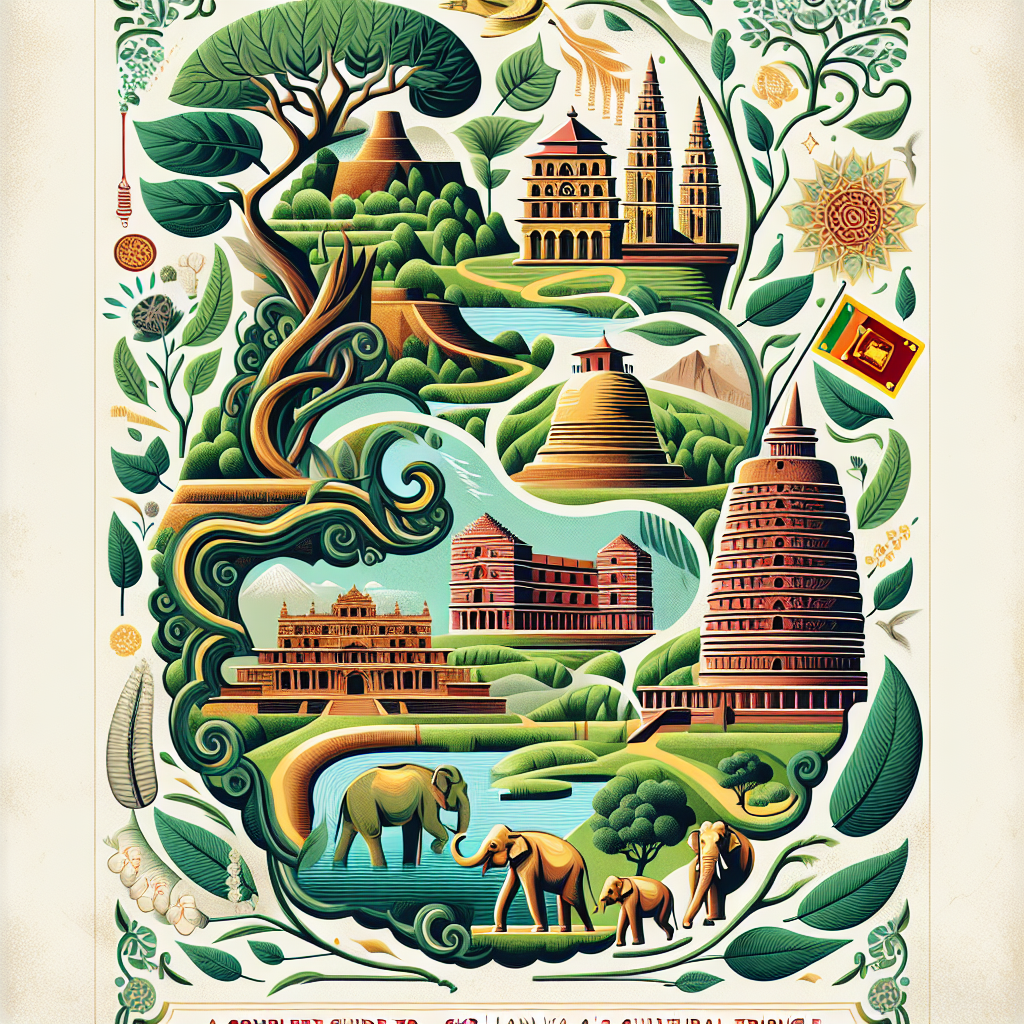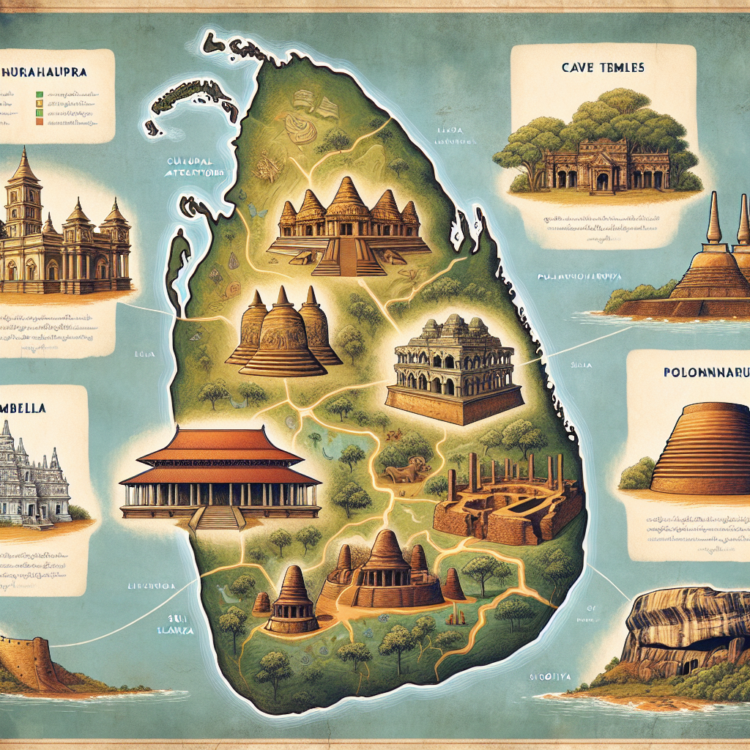Sri Lanka, often referred to as the “Pearl of the Indian Ocean,” is a treasure trove of history, culture, and natural beauty. At the heart of this island nation lies the Cultural Triangle, a region steeped in ancient wonders, UNESCO World Heritage Sites, and timeless traditions. For travelers seeking to immerse themselves in Sri Lanka’s rich heritage, the Cultural Triangle is an unmissable destination.
In this guide, we’ll take you through everything you need to know about exploring Sri Lanka’s Cultural Triangle, from must-visit landmarks to practical travel tips. Whether you’re a history buff, a culture enthusiast, or simply looking for a unique travel experience, this guide will help you plan the perfect trip.
—
What is Sri Lanka’s Cultural Triangle?
The Cultural Triangle is a region in central Sri Lanka that connects three historic cities: Anuradhapura, Polonnaruwa, and Kandy. This area is home to some of the country’s most iconic archaeological sites, ancient temples, and cultural landmarks.
The triangle also includes other significant locations such as Sigiriya, Dambulla, and Mihintale, making it a hub for anyone interested in Sri Lanka’s ancient civilizations and Buddhist heritage.
—
Why Visit the Cultural Triangle?
1. UNESCO World Heritage Sites: The Cultural Triangle boasts six UNESCO-listed sites, including the Sigiriya Rock Fortress and the Sacred City of Kandy.
2. Rich History: The region offers a glimpse into Sri Lanka’s ancient kingdoms, dating back over 2,000 years.
3. Cultural Immersion: From Buddhist temples to traditional festivals, the Cultural Triangle is a gateway to understanding Sri Lanka’s spiritual and cultural identity.
4. Scenic Beauty: Beyond its historical significance, the region is surrounded by lush greenery, wildlife sanctuaries, and serene landscapes.
—
Must-Visit Places in Sri Lanka’s Cultural Triangle
1. Sigiriya Rock Fortress
Known as the “Lion Rock,” Sigiriya is one of Sri Lanka’s most iconic landmarks. This ancient rock fortress, built by King Kashyapa in the 5th century, features stunning frescoes, landscaped gardens, and breathtaking views from the summit.
– Travel Tip: Visit early in the morning to avoid crowds and the midday heat.
– UNESCO Status: Sigiriya Rock Fortress is a UNESCO World Heritage Site.
2. Dambulla Cave Temple
The Dambulla Cave Temple, also known as the Golden Temple of Dambulla, is a complex of five caves adorned with over 150 Buddha statues and intricate murals.
– Travel Tip: Wear modest clothing and be prepared to climb a short hill to reach the temple.
– UNESCO Status: Dambulla Cave Temple is another UNESCO-listed site.
3. Anuradhapura
As the first capital of ancient Sri Lanka, Anuradhapura is a city of immense historical and religious significance. Highlights include the Sacred Bodhi Tree (the oldest documented tree in the world) and the Ruwanwelisaya Stupa.
– Travel Tip: Rent a bicycle to explore the sprawling ruins at your own pace.
– UNESCO Status: Sacred City of Anuradhapura.
4. Polonnaruwa
The second capital of Sri Lanka, Polonnaruwa, is renowned for its well-preserved ruins, including the Gal Vihara rock temple and the Royal Palace.
– Travel Tip: Hire a guide to learn about the history and significance of each site.
– UNESCO Status: Ancient City of Polonnaruwa.
5. Kandy
The cultural capital of Sri Lanka, Kandy, is home to the Temple of the Sacred Tooth Relic, one of the most sacred Buddhist sites in the world.
– Travel Tip: Time your visit to coincide with the Esala Perahera Festival, a grand procession held annually in July or August.
– UNESCO Status: Sacred City of Kandy.
—
Cultural Highlights of the Triangle
Traditional Cuisine
Don’t miss the chance to savor authentic Sri Lankan dishes like rice and curry, hoppers, and kottu roti**. Many local restaurants in the Cultural Triangle offer traditional meals served on banana leaves.
Buddhist Heritage
The Cultural Triangle is a spiritual hub, with numerous temples, stupas, and monasteries that reflect Sri Lanka’s deep-rooted Buddhist traditions.
Wildlife Encounters
The region is also close to several national parks, including Minneriya National Park, famous for its elephant gatherings.
—
Practical Travel Tips
1. Best Time to Visit: The Cultural Triangle is best visited during the dry season (May to September).
2. Getting Around: Public transport is available, but hiring a private car or tuk-tuk is more convenient for exploring multiple sites.
3. Accommodation: From luxury resorts to budget guesthouses, there are plenty of options. Check platforms like Booking.com or Expedia for deals.
4. Entry Fees: Many sites require an entrance fee. Consider purchasing the Cultural Triangle Pass for access to multiple attractions.
—
Related Articles on Our Blog
– 7 Off-the-Beaten-Path Destinations in Sri Lanka
– Top 10 Must-Visit Places in Sri Lanka for First-Time Travelers
– Wild Safaris in Sri Lanka
—
Sri Lanka’s Cultural Triangle is a journey through time, offering a unique blend of history, culture, and natural beauty. Whether you’re marveling at the ancient ruins of Anuradhapura, climbing the iconic Sigiriya Rock, or exploring the sacred city of Kandy, this region promises an unforgettable experience.
Ready to explore Sri Lanka’s Cultural Triangle? Start planning your trip today by booking accommodations through trusted platforms like Booking.com or Expedia. Don’t miss the chance to uncover the wonders of this extraordinary destination!
—
For more information on Sri Lanka’s Cultural Triangle, visit the official Sri Lanka Tourism website.







